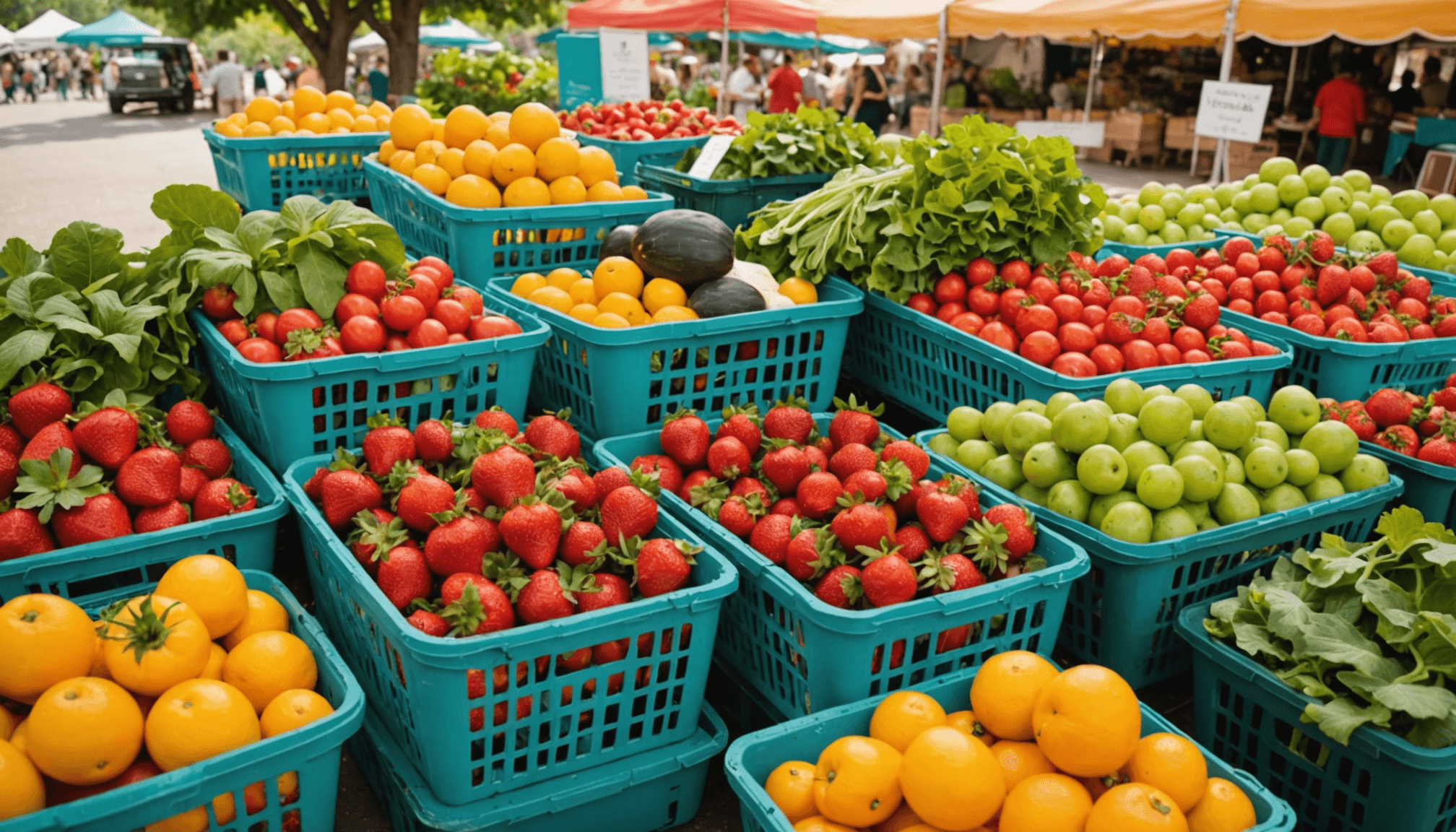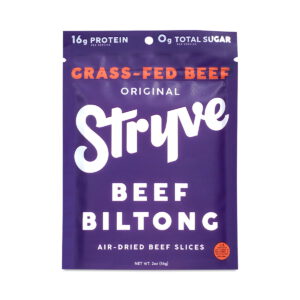- Understanding Nutrition Labels
- Planning Your Grocery List
- Choosing Fresh Produce
- Selecting Whole Grains
- Smart Protein Choices
- Avoiding Processed Foods
When you’re navigating the aisles or scrolling through options online, understanding the intricate details of nutrition labels can greatly enhance your grocery shopping experience and pave the way for healthy eating. Nutrition labels provide more than just calorie counts; they contain vital information that can help you make informed choices for your family’s diet.
Start by examining the serving size. Often, what appears to be a single serving can actually contain multiple servings, which can mislead you about the actual calorie and nutrient intake. Multiply the nutritional values accordingly if you plan to consume more than the listed serving size.
Next, turn your attention to the percent daily values. This percentage tells you how much a specific nutrient in a serving contributes to your overall daily diet. For instance, a product that has 20% of your daily value for fiber is a great choice for incorporating what you need. Aim for goods that provide 10% or more of necessary vitamins and minerals.
Be sure to monitor the fat content, particularly saturated and trans fats, as these can contribute to heart disease. Instead, look for foods that are high in healthy fats like avocados, nuts, and olive oil. Also, consider items that list whole grains as the first ingredient, as these are often richer in nutrients than their refined counterparts.
Sugar can be a sneaky addition to many products, so check the total sugars and added sugars. For a healthy shopping trip, strive to limit added sugars to less than 10% of your total daily calories, as recommended by the American Heart Association. It’s often wise to choose whole foods that contain naturally occurring sugars, like fruits, to satisfy your sweet tooth healthily.
Don’t overlook the ingredient list. A shorter list with recognizable words typically indicates a less processed food. If the ingredients include a lot of additives and preservatives, consider putting it back on the shelf. Instead, stock up on whole foods like fresh produce, organic grains, and staples like beans and lentils that pack a nutritious punch without unnecessary extras.
For those who prefer online shopping, keep an eye out for how familiar brands communicate their nutritional benefits on their websites. Robust product descriptions, customer reviews, and clear images can aid in your understanding of what you’re purchasing. If you’re unsure about a product, look for reliable third-party resources or reviews that highlight its nutritional value. Websites such as the USDA FoodData Central can be invaluable in finding more detailed information about products you might consider.
Remember that there are many health hacks you can implement while shopping. Keeping a running list of foods that you regularly consume may help streamline your grocery trips, whether in-store or online. Consider apps that allow you to save shopping lists or even track where you can find locally sourced items. Not only does this save time, but it also helps support your community by choosing local produce and products when available.
Planning Your Grocery List
Creating a comprehensive grocery list is a crucial step that leads to more efficient grocery shopping and promotes healthy eating habits. Before heading to the store or logging into an online grocery platform, taking the time to plan your list can help you stay focused and avoid impulse buys that often derail a healthy diet.
Begin by assessing your pantry, refrigerator, and freezer to identify what items you already have. This ensures you don’t purchase duplicates, which not only saves money but also minimizes food waste. Once you’ve noted what’s stocked, think about the meals you plan to prepare for the week. It’s helpful to create a meal plan that includes breakfast, lunch, dinner, and snacks. This practice aids in clarifying what ingredients are required, preventing last-minute decisions that may lead to unhealthy choices.
Organize your grocery list by category, which streamlines the shopping process and saves time in the store. Common categories may include:
| Category | Examples |
|---|---|
| Fruits | Apples, Bananas, Berries |
| Vegetables | Spinach, Broccoli, Carrots |
| Whole Grains | Brown Rice, Quinoa, Oats |
| Proteins | Chicken, Tofu, Lentils |
| Dairy or Alternatives | Greek Yogurt, Almond Milk, Cheese |
| Snacks | Nut Butter, Popcorn, Dark Chocolate |
Setting a budget can also be essential when planning your grocery list. Determine how much you’re willing to spend while prioritizing whole, nutritious foods. This can help you make more mindful selections, particularly when navigating the store aisles. Incorporating a few versatile staples can stretch your budget and create a variety of meals. For instance, items such as beans, rice, and seasonal vegetables are typically economical and can form the base of numerous dishes.
Moreover, consider exploring local farmer’s markets or cooperatives for fresh produce. Not only does this support local agriculture, but it often provides fresher options at a lower cost than conventional grocery stores. When making your grocery shopping list, include items that are in season, as they are generally more flavorful and affordable.
Finally, be cautious of “sales” or bulk-buying deals. While it can be tempting to stock up on items that appear to be on sale, ensure they are items you use regularly and can store effectively without spoilage. This type of intentional planning encourages healthy eating and prevents overindulgence in processed foods that may find their way into your cart out of convenience or eye-catching promotions.
By taking these steps—reviewing what you already have, planning meals, organizing your list, setting a budget, supporting local producers, and focusing on seasonality—you optimize your grocery shopping experience and pave the way for a healthier diet. These practices not only lead to better nutrition but also save valuable time during your shopping trips.
Choosing Fresh Produce

When selecting fresh produce, the freshness and quality significantly impact the nutrition and flavor of your meals. Shopping for fresh fruits and vegetables is not only about picking what looks good; it’s also about understanding what to look for to ensure you’re bringing home the best possible options. Start by considering the seasonality of produce. Seasonal fruits and vegetables tend to be fresher, more flavorful, and often more affordable. Research local harvest times to align your shopping list with what’s ripe and ready in your area.
Before heading to the store or making online selections, take a moment to educate yourself on the characteristics of high-quality produce. For instance, when choosing apples, look for those that are firm and free of blemishes. Greens like spinach should appear vibrant and crisp, while ripe tomatoes will have a slight give when gently pressed. For online grocery shopping, ensure your source provides detailed images and descriptions to help you gauge freshness.
Choosing organic produce can be beneficial for both your health and the environment. Organic fruits and vegetables are grown without synthetic pesticides or genetically modified organisms (GMOs), making them a safer choice for you and your family. Prioritize organic options for the Dirty Dozen, a list published by the EWG (Environmental Working Group), which highlights fruits and vegetables with the highest pesticide residues. Some of these include strawberries, spinach, and kale. When shopping for fresh produce, you can refer to this list to make informed choices.
For budget-conscious shoppers, buying in bulk can be a savvy strategy, especially for items like root vegetables, which have a longer shelf life. However, be mindful of purchasing too much if you might not consume it before it spoils. When shopping, consider quantity over quality by selecting a few high-nutrient items that can carry your meals through the week. Community-supported agriculture (CSA) programs or farmer’s markets can also provide you with access to fresh, local produce at a reasonable price while supporting your community.
Always wash your fruits and vegetables before consumption, even if they appear clean. This practice reduces the risk of any pesticide residue, dirt, or bacteria lingering on the surface. For leafy greens, it’s wise to consider a salad spinner for thorough drying, as moisture can lead to premature spoilage. For berries and delicate fruits, rinse gently to avoid crushing them. If purchasing in bulk, try to separate what you won’t use immediately. Store perishables in appropriate conditions to extend their freshness—consider using breathable produce bags or containers that allow airflow.
Don’t shy away from experimenting with unfamiliar fruits and vegetables. This practice not only adds excitement to your meals but also introduces diverse nutrients to your diet. Look for recipes online that highlight seasonal produce or try new cooking methods to elevate these fresh ingredients. By taking the time to choose quality produce—whether you’re in a store or browsing options online—you pave the way for rich, vibrant meals that contribute to long-term healthy eating habits.
Selecting Whole Grains
When selecting whole grains, it’s essential to recognize the significant role they play in promoting healthy eating. These nutrient-dense foods are packed with fiber, vitamins, and minerals, contributing to overall health and well-being. Whole grains differ from refined grains primarily because they retain all parts of the grain—the bran, germ, and endosperm. This means they contain more nutrients and fiber, which are crucial for proper digestion and reducing the risk of chronic diseases.
As you browse through the grocery aisles, look for products that specifically state “100% whole grain” or “whole grain” on their packaging. Common whole grain options include brown rice, quinoa, barley, oats, and whole grain bread and pasta. The ingredients list should reflect whole grains as the first item. Keep in mind that terms like “multi-grain” or “made with whole grains” can be misleading; these products might still contain refined grains, which provide fewer health benefits.
Incorporating a variety of whole grains into your diet can facilitate a more balanced intake of nutrients. For example, oats are known for their cholesterol-lowering properties, while quinoa is a complete protein, making it an excellent choice for paired meals, especially for vegetarians and vegans. Barley and bulgur are also great additions, offering unique textures and flavors that can enhance a variety of dishes.
For those pressed for time, whole grains can be easily prepared in bulk. Cooking larger portions allows you to have healthy options readily available throughout the week. You can store cooked grains in the refrigerator for up to a week or freeze them in smaller portions for future meals. This meal prep strategy not only promotes healthy eating but also saves time during busy days.
Moreover, when shopping for whole grains, don’t overlook the possibilities presented by the bulk bins. They often offer a wider selection of grains at more affordable prices compared to pre-packaged options. Buying in bulk allows you to purchase only the amount you need, reducing waste and keeping your pantry stocked with a variety of grains to experiment with.
When cooking with whole grains, consider trying different techniques and recipes to keep meals exciting. From hearty grain bowls to savory pilafs and even baked goods, whole grains can serve as an excellent base or complement to your meals. You might also find substitutions easily; for instance, replacing white rice with brown rice or using whole wheat flour in your baking can enhance the nutritional profile without compromising flavor.
“Whole grains are a great source of dietary fiber, which can support healthy digestion and help manage body weight.” – American Heart Association
By being mindful of your choices and focusing on incorporating whole grains regularly, you can transform your grocery shopping experience into one that emphasizes health and longevity. Find joy in discovering new grains and recipes, making your journey towards healthy eating a delightful adventure.
Smart Protein Choices
 When it comes to making smart protein choices during grocery shopping, it’s essential to focus on the quality and source of the proteins you select, as they play a crucial role in supporting a balanced diet and promoting healthy eating. Start by considering a balance between animal and plant-based proteins. Lean cuts of meat, such as chicken breast or turkey, can offer high protein content with lower fat levels, while fatty fish like salmon supplies healthy omega-3 fatty acids along with protein. Incorporating a variety of protein sources not only maximizes nutrient intake but also adds diversity to your meals.
When it comes to making smart protein choices during grocery shopping, it’s essential to focus on the quality and source of the proteins you select, as they play a crucial role in supporting a balanced diet and promoting healthy eating. Start by considering a balance between animal and plant-based proteins. Lean cuts of meat, such as chicken breast or turkey, can offer high protein content with lower fat levels, while fatty fish like salmon supplies healthy omega-3 fatty acids along with protein. Incorporating a variety of protein sources not only maximizes nutrient intake but also adds diversity to your meals.
For those interested in plants, leguminous foods such as beans, lentils, and chickpeas are excellent protein options. These foods are not only rich in protein but also provide complex carbohydrates and fiber, helping you feel fuller for longer. Tofu and tempeh are versatile plant-based proteins that can take on flavors of the dish they’re added to, allowing you to create exciting meals while adhering to health-conscious choices. Don’t overlook how nuts and seeds can be integrated into your diet; they are packed with healthy fats, protein, and vital nutrients.
Consider the environmental and ethical aspects of your protein choices as well. Seeking out sustainably sourced options, such as grass-fed beef or pasture-raised poultry, may contribute to better animal welfare and environmental practices. Moreover, look for local farms or brands that prioritize responsible practices regarding food safety and animal treatment. Supporting these initiatives can enhance your grocery shopping experience by ensuring that you’re not only eating responsibly but also advocating for a harmonious relationship with the planet.
As you stroll through the protein section, pay attention to labels that indicate hormone-free or antibiotic-free meats, and don’t shy away from exploring options in the international aisle. Ethnic markets often carry different sources of protein, including various types of fish, exotic legumes, and spices to enhance flavor. These can inspire you to experiment with new recipes that utilize ingredients you may not be familiar with, turning healthy eating into a culinary adventure.
To aid your decision-making process and make your protein choices even savvier, meal prepping could be a game-changer. Cook proteins in advance—like grilled chicken, boiled eggs, or chickpea salads—to streamline your meals throughout the week and avoid the temptation of reaching for less healthy convenience options in a hurry. Having protein-rich meals readily available saves time and encourages healthier eating habits.
Pay attention to portion sizes when planning your meals. Understanding how much protein you need based on factors like age, activity level, and health goals helps you purchase the right amount in the store. Balance your plate by pairing protein with whole grains and an array of vegetables to create satisfying and nutritious meals that contribute to a well-rounded diet.
- What are the best sources of protein for healthy eating?
- Lean meats, poultry, fatty fish, eggs, dairy, beans, lentils, tofu, and nuts are excellent sources of protein that contribute to a balanced diet.
- Is plant-based protein as effective as animal protein?
- Yes, plant-based proteins can provide complete nutrition, especially when combined properly, such as pairing beans with grains, ensuring you receive all essential amino acids.
- How can I incorporate more protein into my diet?
- Incorporate protein into every meal by adding eggs to breakfast, including legumes in salads and entrees, and snacking on nuts or Greek yogurt.
- Should I avoid red meat?
- While red meat can be part of a healthy diet, it’s wise to consume it in moderation, focusing on leaner cuts and balacing it with plenty of plant-based proteins.
- What are some quick and easy protein-packed meals?
- Consider meals like a quinoa and black bean bowl, grilled chicken wraps, or a yogurt parfait with nuts and fruits for quick, nutritious options.
- How can I save time when preparing protein-rich meals?
- Meal prepping in advance, cooking larger batches of protein, and utilizing leftovers can effectively save you time in the kitchen throughout the week.
- Are there any proteins I should avoid?
- Limit processed meats like sausages, hot dogs, and deli meats, as these can contain unhealthy additives and preservatives; focus instead on whole, minimally processed options.
Avoiding Processed Foods
As you venture into the world of grocery shopping, it’s crucial to be aware of the many processed foods that can undermine your efforts towards healthy eating. Processed foods often contain added sugars, unhealthy fats, and preservatives, which can lead to health issues over time. By making informed choices, you can avoid inadvertently filling your cart with items that may derail your dietary goals.
One effective strategy is to focus on the perimeter of the store, where the fresh produce, lean proteins, and whole foods typically reside. This method helps steer you away from the middle aisles, where processed and packaged foods are more prevalent. When you do need to venture into these aisles, turn to items with minimal ingredient lists. Products with just a few recognizable ingredients signal that you’re likely choosing something healthier.
Another critical consideration is recognizing hidden sugars and unhealthy fats lurking in processed foods. These ingredients often disguise themselves under different names on labels. Look out for terms like corn syrup, fructose, and hydrogenated oils. Instead of reaching for snack bars or sugary breakfast cereals, opt for whole foods like fresh fruit, nuts, or homemade granola, which provide natural sweetness and health benefits without the added fillers.
Investing in healthy alternatives can be budget-friendly while also promoting better nutrition. Frozen fruits and vegetables, for instance, are often just as nutritious as fresh ones and can be more affordable. They have longer shelf lives and convenience, especially for busy families and professionals with limited time. They allow for quick meal prep while ensuring you still enjoy the vibrant flavors and nutrients of farm-fresh produce.
For those who appreciate the convenience of ready-made options, consider meal kits or pre-chopped fresh ingredients from your local grocery store. These products help save time while maintaining a focus on higher-quality, less processed foods. However, ensure to check for additives that might negate their health benefits. Always ask yourself if you could re-create a similar meal more healthily at home with whole foods.
Don’t forget about label literacy in your pursuit of healthy eating. Familiarize yourself with what to look for and what to avoid. For multi-ingredient foods, a good rule of thumb is: if you can’t pronounce it, it’s often best left on the shelf. A lengthier list of ingredients filled with chemicals is a strong indicator of processed food that could potentially impact your health adversely.
For added safety, online grocery shopping can also present its challenges. Be sure to buy from reputable retailers with good ratings for their product quality. Read reviews, check the freshness date, and ensure that each product is sealed properly before purchasing. Customer feedback can give invaluable insight into the quality of fresh items being shipped. When selecting processed products, focus on those that emphasize transparency and clean ingredients.
In addition to being mindful about what goes into your cart, you can effectively plan meals around unprocessed items, making it easier to avoid unhealthy choices. Experiment with batch cooking whole grains and proteins in advance, which can serve as the backbone for multiple meals throughout the week. This tactic not only saves time but promotes healthy eating when temptation strikes.
Ultimately, avoiding processed foods doesn’t require a complete overhaul of your shopping habits; it’s about making smart, conscious choices that can lead to healthier eating patterns. Substituting whole foods for processed alternatives, utilizing simple strategies, and staying informed while grocery shopping can pave the way for lasting health benefits.
New Customers Offer!
Free Gift for the new customer
$24 Value, When You Subscrib Visit Thrive Market












